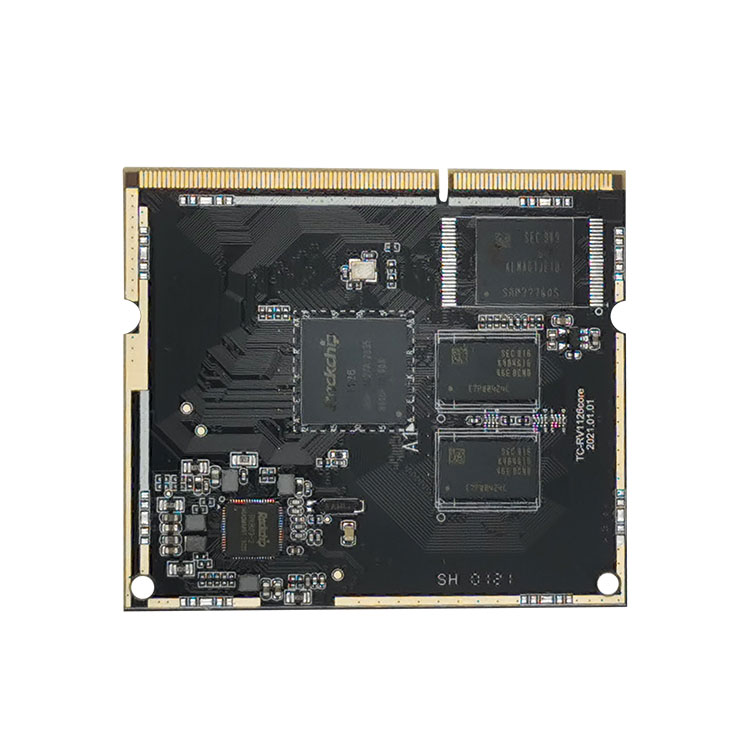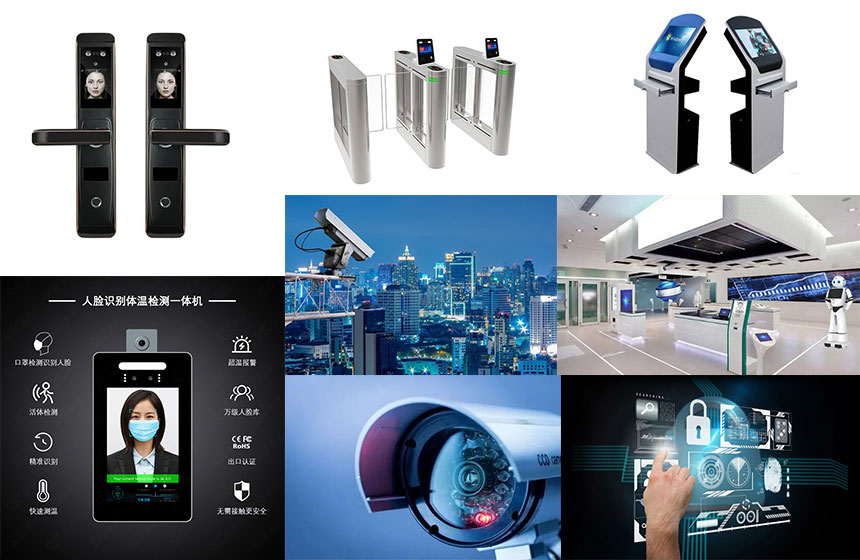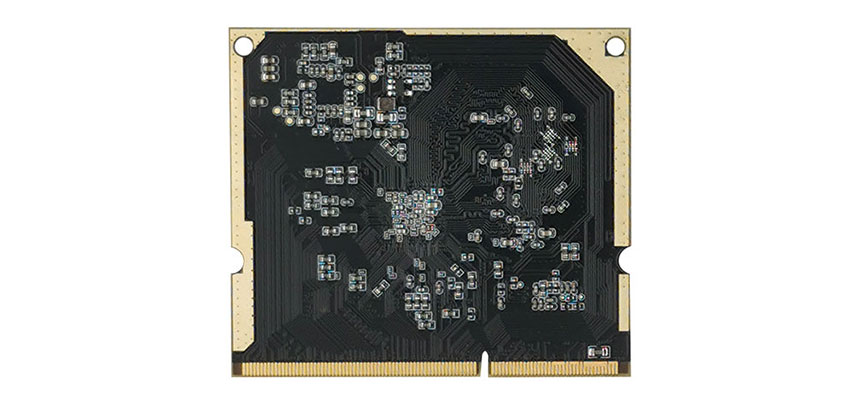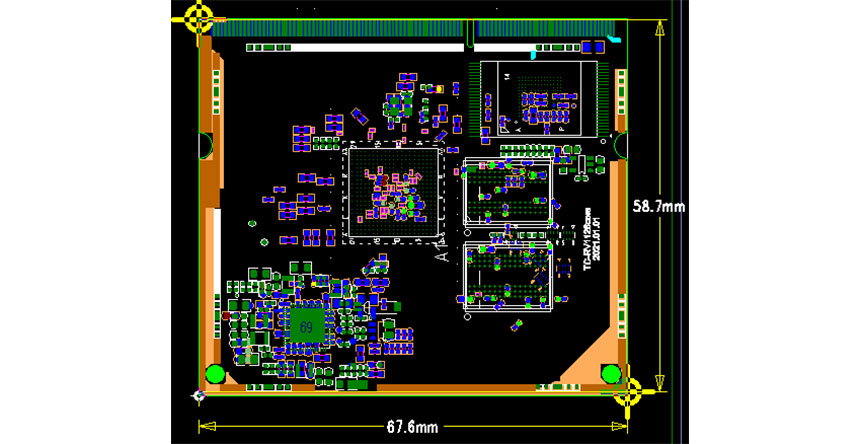
Support Buildroot+QT operating system, the system occupies less resources, starts fast, runs stably and reliably.
Board Design Services
Building a tailored carrier board according to customers’ requirements
|
Structural parameters |
|
|
Exterior |
Gold finger form |
|
Core board size |
67.6mm*58.7mm*1.2mm |
|
Quantity |
204 PIN |
|
Layer |
layer 8 |
|
Performance |
|
|
CPU |
Rockchip RV1126 Quad-core ARM Cortex-A7 32-bit low-power AI vision processor, clocked at 1.5GHz |
|
NPU |
2.0Tops, with strong network model compatibility, support TensorFlow/MXNet/PyTorch/Caffe, etc. |
|
RAM |
Standard 1GB LPDDR4, optional 512MB or 2GB |
|
Memory |
Standard 8GB, 4GB/8GB/16GB/32GB emmc optional |
|
Power management |
RK809-2 PMU power management unit |
|
Video decoding |
4K H.264/H.265 30fps video decoding |
|
Video encoding |
4K H.264/H.265 30fps video encoding |
|
system |
Linux |
|
power supply |
Input voltage 5V, peak current 3A |
|
Hardware |
|
|
display |
Support MIPI-DSI interface, 1080P@60FPS |
|
Audio |
8-channel I2S (TDM/PDM), 2-channel I2S |
|
Ethernet |
Support 10/100/1000Mbps Ethernet interface |
|
wireless network |
Expansion via SDIO interface |
|
webcam |
Supports simultaneous input of 3 cameras: 2 MIPI CSI (or LVDS/sub LVDS) and 1 DVP (BT.601/BT.656/BT.1120) Support 14 million ISP 2.0 with 3 frames HDR |
|
Peripheral interface |
USB2.0 OTG,USB2.0 HOST Gigabit Ethernet interface, SDIO 3.0*2 8-channel I2S with TDM/PDM, 2-channel I2S UART*6,SPI*2,I2C*6,GPIO,CAN,PWM |
|
Electrical characteristics |
|
|
Input voltage |
5V/3A |
|
Storage temperature |
-30~80 degrees |
|
Operating temperature |
-20~60 degrees |




